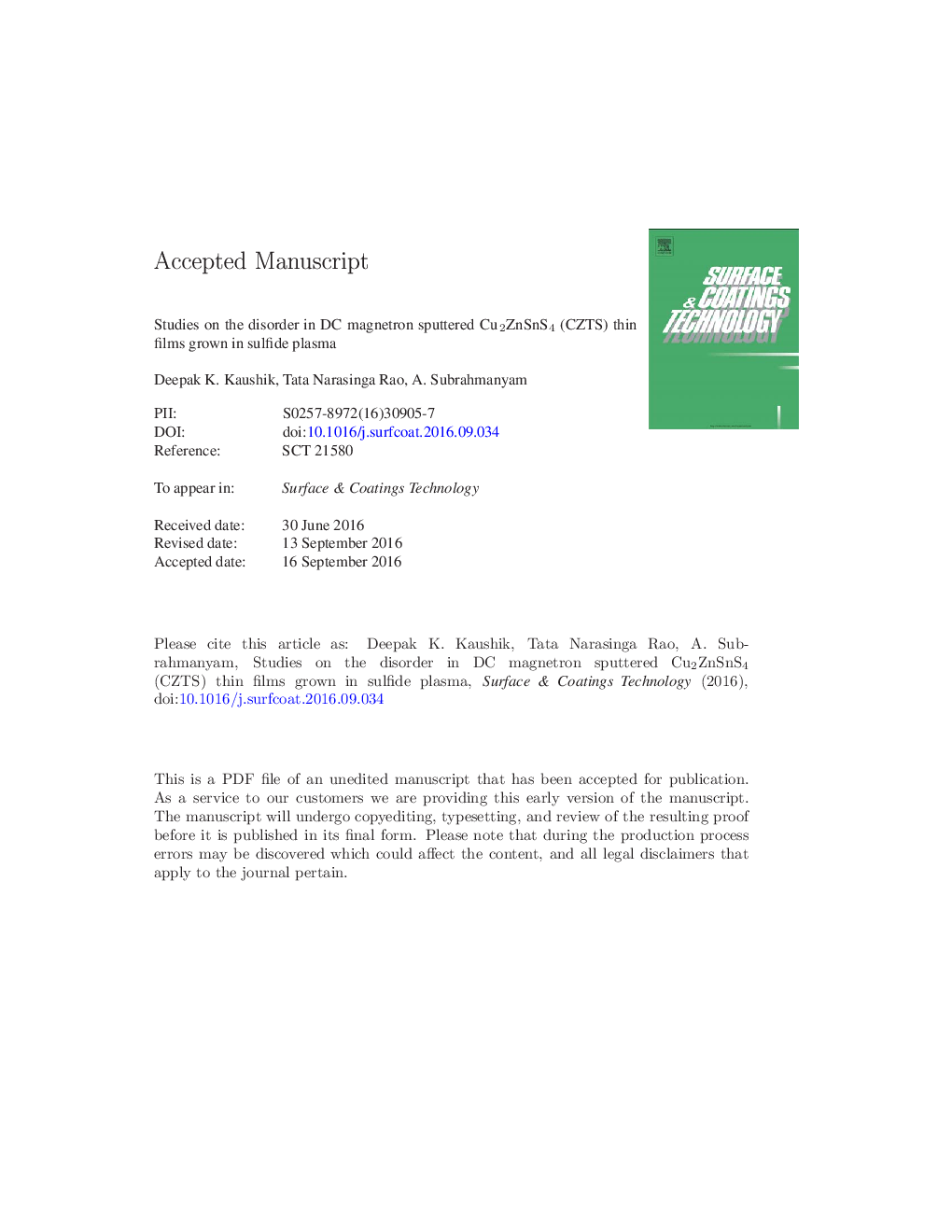| Article ID | Journal | Published Year | Pages | File Type |
|---|---|---|---|---|
| 5464761 | Surface and Coatings Technology | 2017 | 17 Pages |
Abstract
Cu2ZnSnS4 (CZTS) is a widely studied material in thin film photovoltaics. The desirable property of copper poor and zinc rich in CZTS thin films introduces several point defects and secondary and tertiary phases irrespective of growth techniques and growth conditions; these defects and the phases introduce disorder in the lattice. In the present study, CZTS thin films are prepared at 520 K with DC magnetron sputtering technique using CZT alloy target in the presence of hydrogen sulfide plasma. The CZTS thin films have been prepared at 30 W and 40 W magnetron powers. X-ray diffraction and Raman spectroscopy show that the CZTS films are polycrystalline and have partially disordered kesterite (PD-KS) phase. The CZTS films grown are copper poor and zinc rich as indicated by Energy Dispersive X-ray (EDX) analysis. The optical band gap of the films is 1.56 eV. The disorder of PD-KS CZTS films has been studied by the low temperature (300 â 20 K) electrical resistivity and Hall effect measurements. The transport of charge carriers in disordered p-CZTS takes place via hopping mechanisms. CZTS films prepared with 30 W magnetron power are more disordered structure due to the copper vacancy (VCu). The surface work function of CZTS thin films measured by Kelvin probe technique is 4.7 eV.
Related Topics
Physical Sciences and Engineering
Materials Science
Nanotechnology
Authors
Deepak Kumar Kaushik, Tata Narasinga Rao, A. Subrahmanyam,
